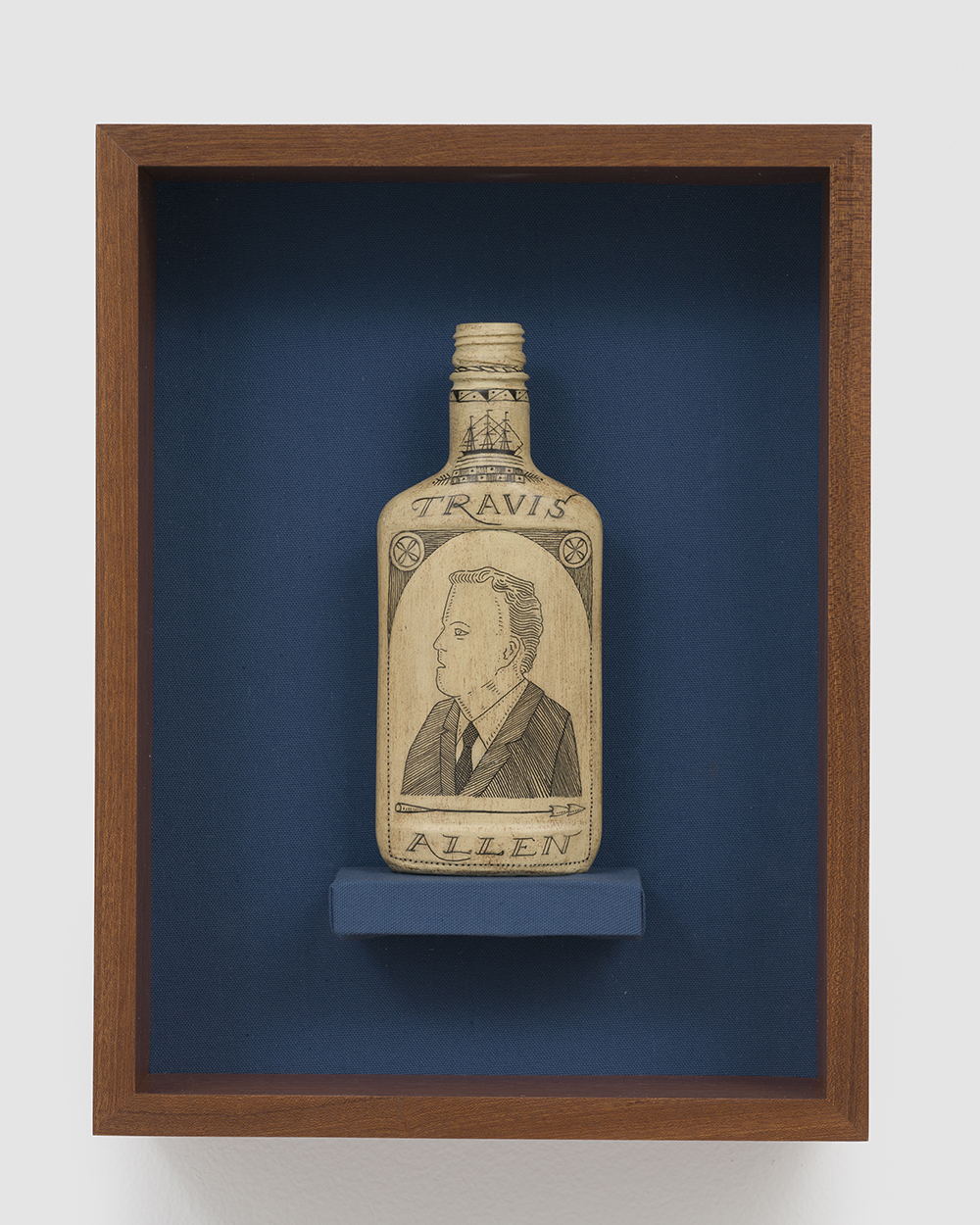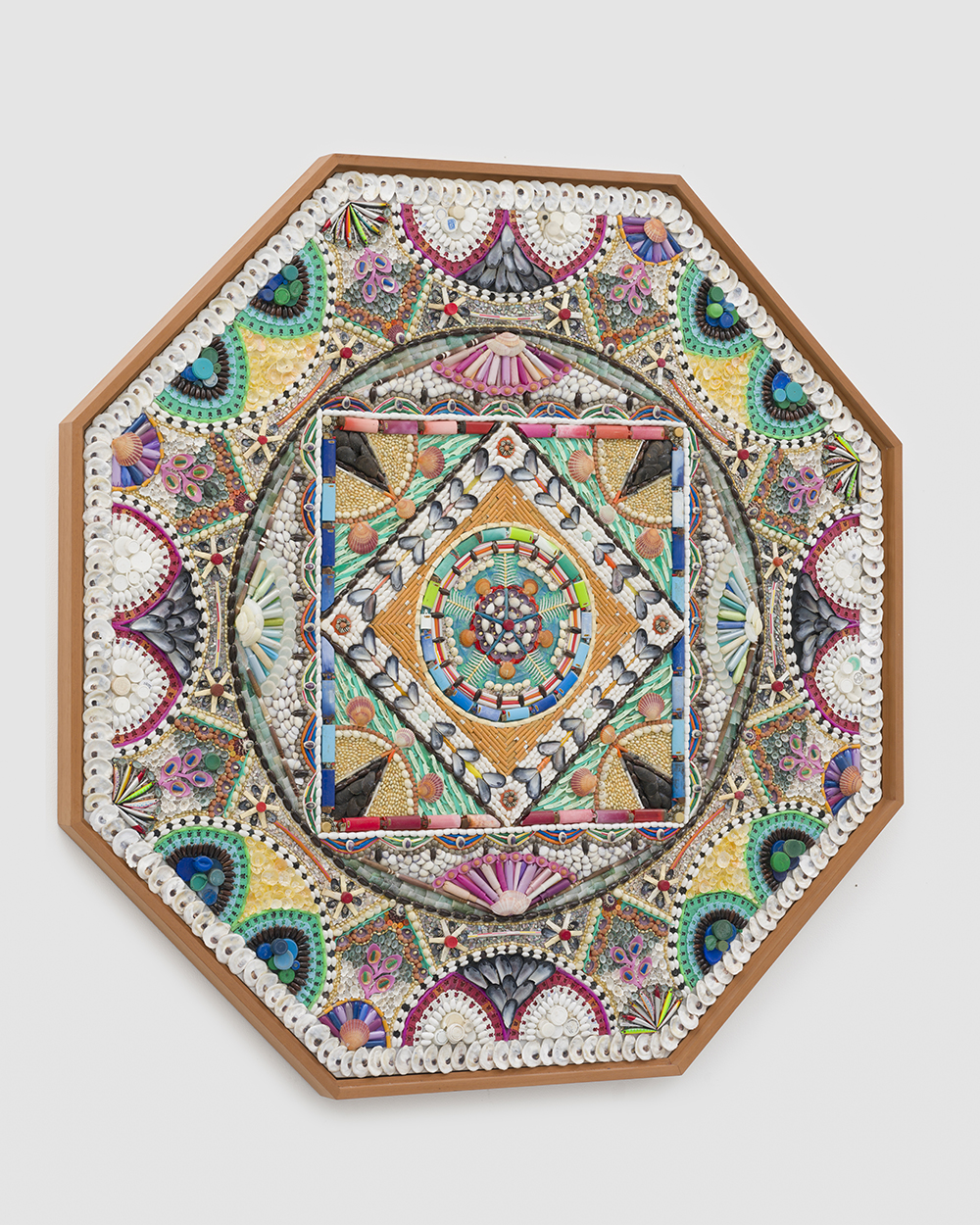“Humankind cannot bear very much reality,” remarked the poet who gave us The Wasteland, T.S. Eliot. The observation supports the standard explanation for the failings of our species to adequately address the climate crisis, the scope and scale of which are too abstract and elusive for people to fathom. Artist and activist Duke Riley is determined to change that and make the calamitous environmental impact of human behavior comprehensible to visitors, even if that means breaking up its components into a million tiny pieces and then reassembling them, or addressing it in a kitschy YouTube tutorial. Fabricated from scavenged, seaborne plastics, the mosaics, scrimshaws, drawings and sculptures included in “Tomorrow is a Mystery” leverage artifice, illusion, humor, irony and masterful craftsmanship to incite jolts of recognition that illuminate, however briefly, the difficult but necessary truth.
Mesmerizing geometric patterns unfurl kaleidoscopically from the center of a hexagon on the gallery’s back wall. At first glance, the crystalline mosaic, with its aquamarine, amber, and opal planes, is breathtaking. Only upon close inspection does one see that the lustrous seashells are interlaid not with gems or glass tessera but with a rainbow of spoons, tampon applicators, bottle caps and other insipid single-use plastics. Disgust intermingles with delight, and while you can’t look away from Order from Prescription History (2023) you can’t unsee the trash. In O’er the Wide and Plastic Sea (2023) a chimerical mosaic seascape of a cargo ship and a pod of whales, black combs replicate the ventral grooves that run the length of a whale’s body, corroded lighter cases evoke weathered shipping containers, and bulbous red bottle caps recall the rubber bumpers encircling a freighter’s hull. Comparing the crenelation of a plastic lid with that of a scallop shell, or the sheen of a cigar tip with that of a sea snail, nods to the striking difference between nature’s discarded goods and our own.

Duke Riley, No. 399 of the Poly S, Tyrene Memorial Maritime Museum, 2023. Photo: © 2023 Yubo Dong; photo credit @ofphotostudio Yu. Courtesy of the artist and Charlie James Gallery, Los Angeles.
Perhaps the most efficacious simulacrum in the show is the meticulously detailed scrimshaw. Instead of whale teeth, the material 19th-century sailors etched in, Riley scrolls his dense yet fine-lined mariner imagery on whitewashed and artificially patinated plastic products, such as flip flops and honey pots. That the ersatz objects are almost indistinguishable from anthropological artifacts gives credence and gravity to the drawings, which range from factory renderings to portraits of the business executives the artist holds responsible for producing the excess of single-use plastics.
Two shadow boxes display Technicolor plastics that shimmer between fishing lures and the fish themselves. Constructed from easily recognizable products that lure consumers with the promise of health (medicine droppers), hygiene (toothbrushes), beauty (hair clips) and pleasure (vape pens), they are as humorous as they are unsettling. In his clever parody of a fishing tutorial, Riley earnestly instructs viewers on how to turn a discarded tampon applicator into a lure of their own. Proving once again that a few minor adjustments can have a transformative effect, the artist calls us to reconsider our consumption habits in the service of collective action toward systemic change.


